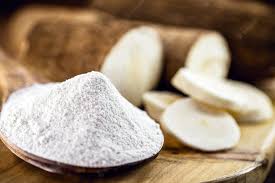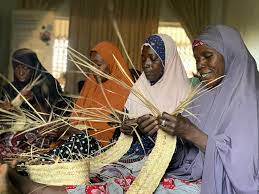
Cassava (Manihot esculenta), also known as manioc, yuca, macaxeira, mandioca, aipim, and agbeli, is a plant native to South America which is extensively cultivated as a staple crop in tropical and subtropical regions in Africa and Asia for its edible starchy tuberous root, a major source of carbohydrates.
Cassava, along with rice and maize, is one of the largest sources of calories in the tropics, thereby constituting a major staple food in the developing world, providing a basic diet for millions of people.
In 2019, the global cassava market increased by zero point four percent (0.4%) to $164.1B (IndexBox estimates), rising for the third consecutive year after two years of decline. Overall, consumption continues to indicate a relatively flat trend pattern.
The pace of growth was the most pronounced in 2014 with an increase of seven point eight percent (7.8%) year on year. As a result, consumption attained a peak level of $172.1B. From 2015 to 2019, the growth of the global market remained at a somewhat lower figure.
The countries with the highest volumes of cassava consumption in 2019 were Nigeria (45M tonnes), the Democratic Republic of the Congo (32M tonnes) and Thailand (32M tonnes), with a combined forty-two percent (42%) share of global consumption. Ghana, Brazil, Indonesia, Angola, Viet Nam, Cambodia, Mozambique, China, and Malawi lagged somewhat behind, together comprising a further thirty-seven percent (37%).
Cassava is the most important root crop in Nigeria. Apart from being a staple crop in both rural and urban household’s cassava is a major source of income to cassava farmers and processors in the rural areas.
Cassava alone contributes about forty-five percent (45%) of agricultural gross domestic product (GDP) in Nigeria for food or domestic purposes but its industrial processing and utilization has been very limited.
Currently, the country produces about fourty-five million (45,000,000) tons of the cassava tubers annually and cassava root is made up of about fifty-five percent (55%) water and thus is a highly perishable crop and do not usually remain fresh few days after harvest.
Due to the desire of the federal government to reduce import dependency and conserve of scare foreign exchange, there is national programme aimed at increasing the production cassava flour to be substituted with wheat flour.
Cassava flour is made from cassava pieces that have been dried, then crushed. High quality cassava flour (HQCF) is simply unfermented cassava flour. High-quality cassava flour is made within a day of harvesting the root. It is very white, has low fat content, is not sour like traditional, fermented cassava flour, does not give a bad smell or taste to food products and can mix very well with wheat flour for use in bread or cakes.
It has been established through research that High Quality Cassava Flour (HQCF) can be substituted or added in bakery, paperboard and plywood manufacturing activities.























